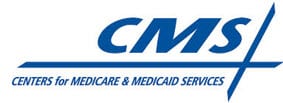The eHealth initiative is still very hard to discern among all the chatter, even the WHO is addressing the eHealth initiative. Is the eHealth initiative just another new buzzword to keep track of, or is this a real phenomenon that may have incentives attached that will benefit my organization and my patients? Let’s look at a couple of possibilities.
A major eHealth initiative already underway
Aspects of our current healthcare system seem at once antiquated and technically advanced. Physicians still see most patients one at a time, often hearing the same patient complaints and repeating the same treatment information over and over again to a continuous stream of one-person audiences. But physicians also analyze patient complaints utilizing the best and latest research as they decide on a course of treatment. Hospitals continue to emphasize their census as the key to financial success, while simultaneously implementing new technology and treatments that speed up patient discharges from the hospital. Healthcare organizations implement telemedicine to extend medical expertise across distances that vastly reduce patient inconvenience related to time and travel, while some still keep medical records on paper.
It is no secret that the healthcare market is one of the last to adopt eHealth technologies that can increase access to care, streamline care, reduce costs and increase efficiency. There are a number of theories for why providers are somewhat resistant to change, which in and of itself has become a meme of sorts: doctors have a hard time putting down the pen and picking up a tablet.
The eHealth initiative, actually part of Meaningful Use EHR incentive payment program
One way to foster change without actually forcing anyone to make a change, is to attach money for undertaking that change. This is the pathway that the biggest healthcare payor in the United States, the federal government, is choosing to take through its Meaningful Use Incentive payments. The HITECH Act of 2009 contained a program that authorized over $36 billion for incentives to eligible professionals and eligible hospitals/critical access hospitals who adopt certified EHR technology, within certain time frames. Over $16.3 billion dollars has been paid under the Medicare EHR Incentive Program, and another $8.6 billion has been paid by the Medicaid EHR Incentive Program. This is far and away the most important eHealth initiative to date, and is directly affecting the more than 414,000 healthcare providers who have received payments as of September 2014.
Of course, no eHealth initiative designed to do nothing less than affect the vast majority of patients and providers in the entire country could be without controversy, and the Meaningful Use EHR Incentive Payment program has had its share. It has proved more difficult than originally anticipated to design and implement criteria for certified EHR technology, and for providers to benefit from adoption of EHR systems. But there is no doubt a tipping point has been passed. Although some providers may discontinue using systems they installed to capture incentive payments, most would not go back to the paper records they were previously using. And there are disincentives in the future – reductions in payments from Medicare – for not using certified EHR technology continuously in the future.
Another sort of eHealth initiative, penalties for high rates of unplanned readmissions to hospitals
Another example of the federal government using money as an incentive to induce change is the penalty that will be imposed on hospitals with excess readmission. The Affordable Care Act of 2011 established the Hospital Readmissions Reduction Program, requiring the Centers for Medicare and Medicaid (CMS) to reduce payments to hospitals with excess readmissions. This penalty, which started at 1% of Medicare payments in FY 2013 and increases to 3% in FY 2015 may make a significant difference to the profitability of those hospitals subject to it.
But how is this an eHealth initiative?
This area is wide open for an eHealth initiative and related tools that are designed to help monitor patients both before and after they are hospitalized. Some patient monitoring tools allow providers to monitor patients remotely, making sure they are continuing to improve after a hospital admission, and providing the opportunity for an early intervention that could avoid a readmission.
Patient-friendly eHealth initiative – patients choosing providers accordingly
Patient friendly. Excellent example. The mHealth Grand Tour – unique and challenging . . . by Orange
eHealth initiative and patient empowerment – perhaps most important
In the past, your medical record information, as well as the information needed to diagnose and treat you, was pretty much the province of health care providers. In fact, the provider was the owner of your medical record, even if you had access to the information based on state laws and regulations.
That era is coming to a close.
It began to breakdown with the advent of widespread, fast access to health information on the internet. In the era of the eHealth initiative, not only will you have access to your official records compiled by providers, but also to the results of the monitoring tools used to keep track of your acute or chronic condition.
The monetary incentives and disincentives implemented by the federal government signify an important message: the government is committed to fostering health care innovation and is using powerful carrots and sticks to make sure innovations are undertaken and adopted – fast. A loss of 3% of total Medicare/Medicaid reimbursements is a significant penalty but when patients start choosing providers based on their use of patient-friendly eHealth technologies, physicians and hospitals will get the message – in spades.
In another article we discuss the tangible benefits of e-health solutions, but it’s important to note that providers are adopting e-health not only because of the federal government monetary incentives but because they allow them to achieve CMS’s three part aim – better health, better health outcomes, and lower costs.

